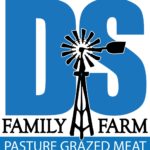Worried about what you are "really" eating? Have peace of mind with pasture grazed meats.
Hazelnut M & M’s
Saturday morning, drinking coffee, thinking about tasks to do on the farm when on the T.V. a Hazelnut M & M’s (R) advertisement appears. Hazelnut M & M’s? Doug had never seen this ad before. This seemed odd, as one of Doug’s tasks for the day is to finish planting 100 hazelnut seedlings!

Why “hazelnut” M & M’s?
Folks, international food corporations such as Mars Incorporated are jumping on the sustainable – regenerative agriculture band wagon.
- Mars Inc. Sustainability Plan
- General Mills Sustainability page
- Kellogg’s Environmental
- Just search “sustainable” and your favorite food company name.
This is not only good, it’s great!
So why hazelnuts?
When it comes to producing food (macro nutrients – carbohydrates, fat and protein) hazelnuts are a great option. Plant once and harvest multiple years. Hazelnuts are a perennial food crop. Compare this to planting an annual food crop such as peanuts. Peanuts are planted every year disturbing the soil annually (I am sure there are farmers working toward a sustainable peanut harvest). From a sustainability point of view, when Mars Inc. switches some product from Peanut M & M’s to Hazelnut M & M’s their overall environmental “footprint” goes down. Mars Inc. becomes a “more sustainable” corporation.
When it comes to Perennial Crop production, one organization that immediately comes to mind is The LAND Institute (Wes Jackson) in Kansas. Just a few hours south of our farm, they have been on the forefront of developing a perennial cropping system for years.
Why hazelnuts at DS Family Farm?
In our climate, trees and shrubs are part of the natural system. Our cow herd loves to munch on elderberry, ash, dogwood and other woody species. Nuts and fruits makes everyone on the farm happier. Hazelnuts will not only provide browse for cattle but shelter and food for future opportunities with chickens and pigs. Bottom line, adding perennial fruit and nut food sources to our perennial grass farm provides another layer of diversity.
Prior to winter round bale grazing on our pastures, trying to plant fruit and nut trees in our pastures was impossible. The thick stand of grasses would choke out any attempt of nuts, seeds or seedlings to grow.
Cow herd to rescue – tree establishment
Round bale hay for this past winter were placed through the pasture. Fruit seeds and nuts were ordered. Seeds and nuts were sprinkled around the perimeter of the round bales knowing that the herd would stomp, poop, pee and scatter hay over the seeds and nuts. Left behind hay would provide a mulch to suppress the grass and give the trees and shrubs a chance to grow. We were too late last fall to order hazelnuts (sold out) so we opted for planting hazelnut seedlings into the center of the spent round bales this spring (photo above).

Won’t the cows kill the trees?
We do experience some tree and shrub loss to the cattle herd each year, in fact, in places, we manage the herd to do it! Simply by keeping the herd concentrated on a shrub or tree patch overnight will set back a shrub patch or kill a tree. Overall, the cow herd cannot keep up with the shrubs and trees we have encroaching on our farm pastures, we probably need goats! So we are not concerned if we loose some of the fruit and nut trees we have planted.
Cows versus squirrels
As of today, we have not noticed any of the seed and nuts growing that were sprinkled around the hay bales last winter. Check back for future updates to find out if we had any success. Hopefully Doug and the cows were as successful as a few squirrels.




